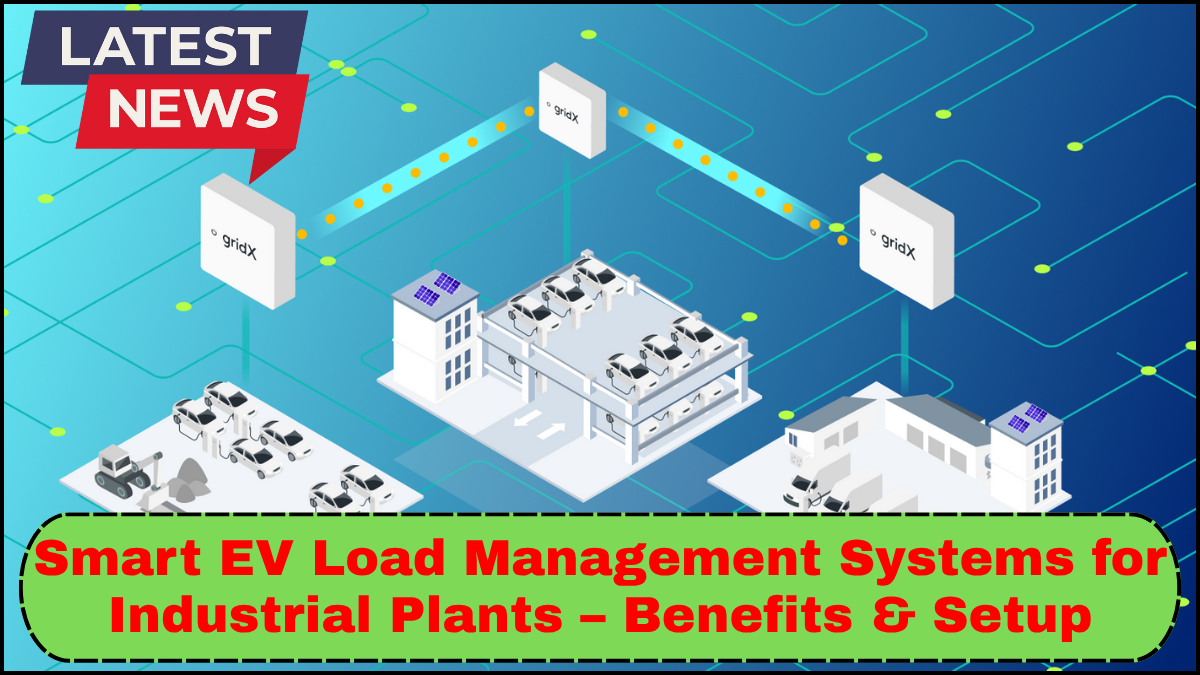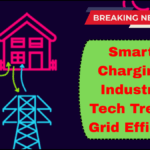As electric vehicles (EVs) become more common across industrial operations—whether for employee fleets, logistics, or material handling—the demand for reliable and efficient charging infrastructure has surged. But high-volume EV charging comes with a challenge: power strain. That’s where Smart EV Load Management Systems step in, offering a strategic way to balance energy usage and optimize operational efficiency.

What is a Smart EV Load Management System?
A Smart EV Load Management System is a technology-driven platform that monitors, controls, and optimizes the distribution of electrical power across multiple EV chargers in real time. It ensures that the total energy consumption stays within the facility’s grid limits, preventing overloads and unnecessary peak demand charges.
Instead of all EV chargers drawing full power simultaneously, the system dynamically distributes energy based on charger availability, battery status, usage schedules, and grid constraints. This not only ensures uninterrupted charging but also supports broader energy optimization goals.
Key Benefits for Industrial Plants
1. Avoids Infrastructure Overload
Industrial facilities often have fixed electrical capacity. Introducing multiple EV chargers without load management can lead to system overloads, forcing expensive infrastructure upgrades. Smart EV Load Management helps stay within existing power limits by intelligently distributing load.
2. Reduces Energy Costs
With demand-based energy billing, power consumption spikes can lead to steep costs. Smart load management prevents these spikes by flattening the demand curve, allowing plants to operate more cost-efficiently and with greater predictability.
3. Improves Energy Optimization
These systems enable real-time data analysis and forecasting, allowing operators to make informed decisions about energy distribution. EV charging can be scheduled during off-peak hours or when renewable energy sources are available, supporting sustainable energy optimization strategies.
4. Enhances Operational Continuity
A malfunctioning or overloaded power system can bring production to a halt. Smart EV Load Management ensures energy delivery is smooth and uninterrupted, helping avoid downtime due to electrical faults or grid failures.
5. Scalability for Future Growth
As industrial EV fleets expand, smart load management makes scaling up effortless. Facilities can add more chargers without overhauling electrical infrastructure—just by optimizing existing load distribution rules.
Core Features of Smart EV Load Management Systems
-
Real-time Monitoring: Track power consumption across all chargers and equipment.
-
Dynamic Load Balancing: Adjust energy flow based on real-time demand and grid conditions.
-
User Access Control: Prioritize charging for critical fleet vehicles or according to employee schedules.
-
Integration with Energy Management Systems (EMS): Align EV charging with broader facility energy strategies.
-
Cloud-based Dashboards: Offer centralized control and reporting from any device.
How to Set Up a Smart EV Load Management System
Implementing a robust system involves several key steps:
1. Site Assessment and Load Analysis
Start with a detailed audit of your plant’s current electrical infrastructure and daily load patterns. This helps identify capacity limitations and potential stress points when EV chargers are active.
2. Charger Infrastructure Planning
Select EV chargers that are compatible with load management protocols such as Open Charge Point Protocol (OCPP). Group them logically based on usage patterns, e.g., fleet parking vs. visitor charging.
3. Install a Centralized Load Management Controller
This acts as the brain of your EV Load Management System, constantly analyzing inputs and controlling charger outputs to maintain a balanced load.
4. Integrate with Facility EMS
For maximum efficiency, link your load management system with your existing EMS or Building Management System (BMS). This allows you to coordinate EV charging with HVAC, lighting, and production line operations.
5. Configure User Rules and Load Priorities
Define rules such as time-based scheduling, priority charging for specific vehicles, and energy source preferences (e.g., solar during daylight). These customizations enhance flexibility and control.
6. Test, Train, and Monitor
Once the system is live, run test cycles and train staff on monitoring dashboards. Regularly review analytics to identify optimization opportunities.
Real-World Example
A manufacturing plant with a fleet of 30 electric delivery vans faced frequent energy spikes during morning shift changes. After deploying a Smart EV Load Management System, they staggered charging in alignment with real-time production energy usage. Result: a 20% drop in peak electricity costs and no disruptions to daily vehicle dispatch.
Frequently Asked Questions (FAQs)
Q1: How many EV chargers can be managed by one system?
Most smart EV load management systems can scale to handle dozens or even hundreds of chargers, depending on the facility’s energy infrastructure and software capabilities.
Q2: Can this system integrate with renewable energy sources?
Yes. Many systems allow EV charging to be timed with solar or wind availability, promoting greener energy use and lowering costs.
Q3: Is load management only necessary for large facilities?
No. Even mid-sized operations can benefit by preventing unnecessary energy spikes and avoiding costly upgrades.
Q4: What are the maintenance requirements?
Minimal. Most systems are software-driven and cloud-managed. Routine checks, software updates, and occasional hardware inspections are typically sufficient.
Q5: How does load management impact EV charging time?
Charging speed may be slightly reduced during peak facility usage, but smart scheduling and prioritization ensure that all vehicles are ready when needed.
click here to learn more



